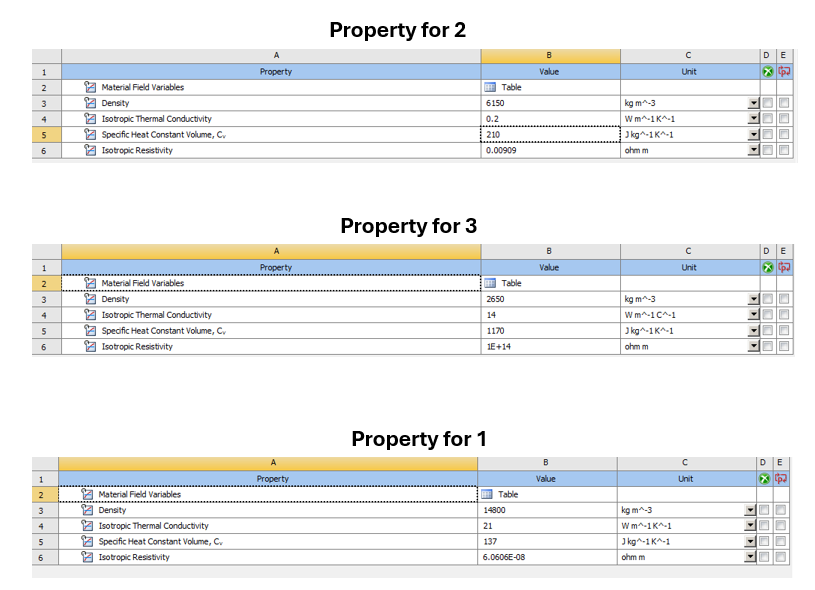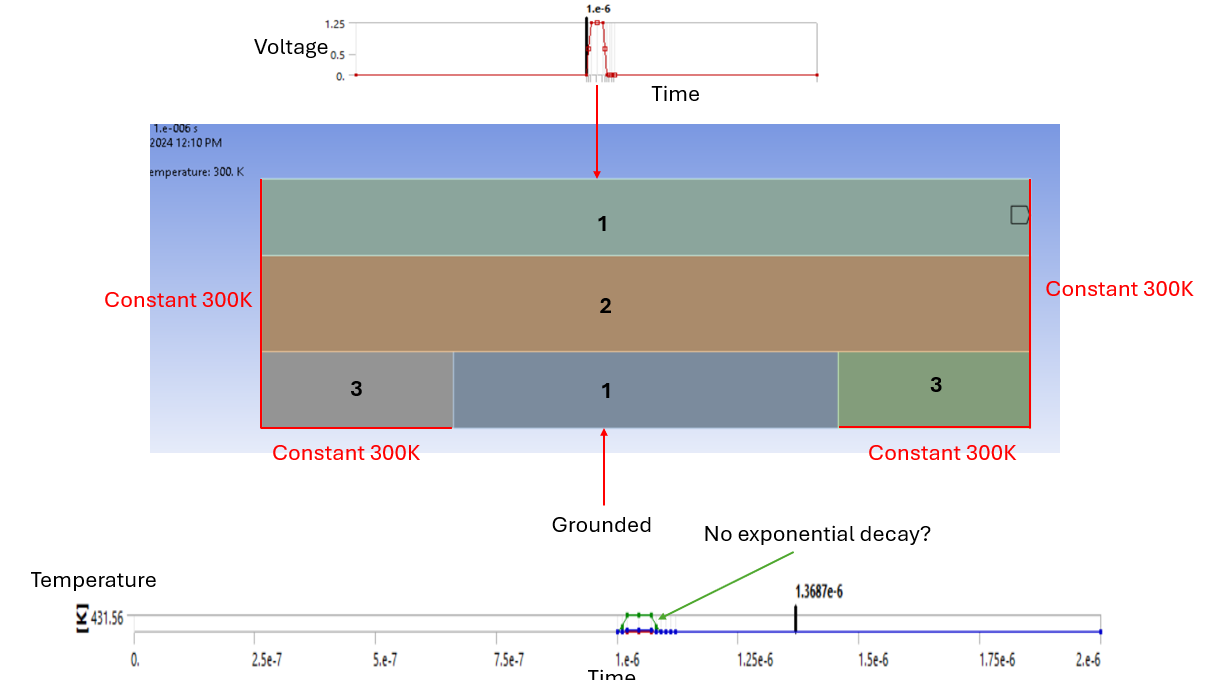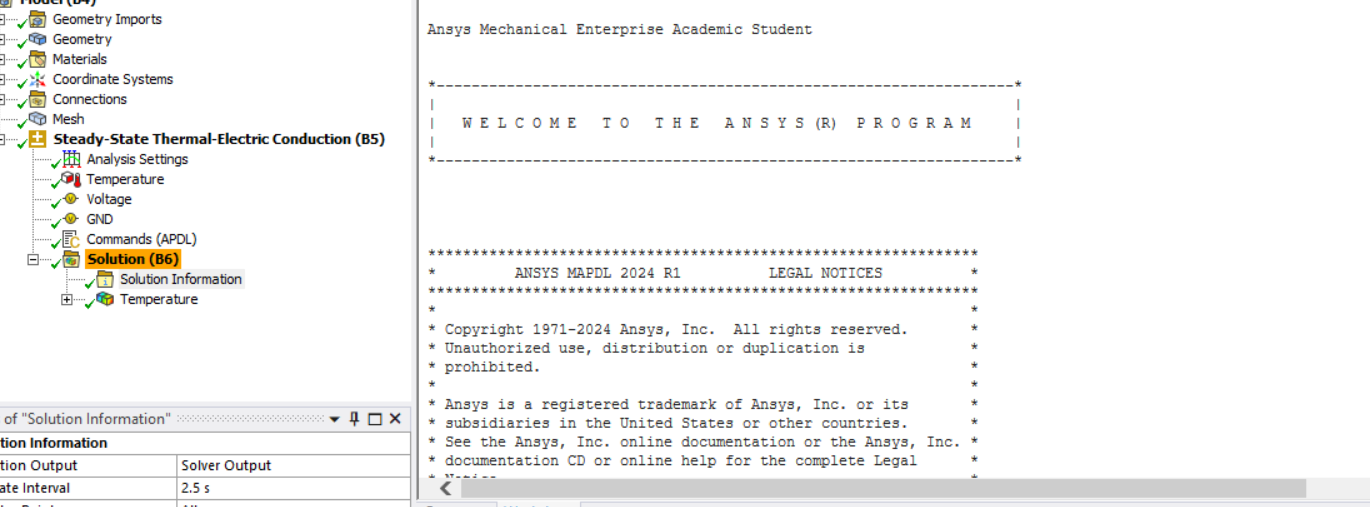-
-
September 30, 2024 at 4:32 am
shaoxiang_go
SubscriberHi, I am trying to run a transient thermal-electric simulation. The idea is to investigate the temperature changes over time when a rectangular voltage pulse is applied to a part of the structure, with the opposite part grounded (Refer to figure). The boundary conditions are set to 300K throughout the whole simulation (Refer to figure). By default, the thermal-electric module is 'steady-state' mode, hence to enable a transient mode simulation, I set the following parameters according to online sources:
"antype,4 ! transient
timint,on"What I am expecting to see is a smooth exponential temperature decay over time when the voltage at the falling width of the rectangular pulse hits 0 V (The temperature should still be decaying even when no voltage is administered). However, at 0 V, the temperature immediately returns to 300 K (which is the boundary condition I set - refer to below diagram). This should not be the case? Moreover, when I modified the density or specific heat volume constant, it does not seem to affect the final temperature at all, even though I enable the transient mode. What could be wrong? I am using the ANSYS 2024 version. Thank you very much for your help.
-
September 30, 2024 at 3:13 pm
dlooman
Ansys EmployeeThose commands should have produced a transient analysis, but it does appear you getting a series of steady state solutions instead. Did you review the solution output ("Solution Information") for a possible explanation. I wouldn't recommend using a number like 1e14 for the resistivity of material 3. It could cause ill-conditioning of the matrices. A number like 100 should be high enough.
-
October 2, 2024 at 8:49 am
shaoxiang_go
SubscriberHi dlooman,
Thank you for your suggestion. I have changed the resistivity of material 3 to 100 like what you suggest. However, I am still getting a warning (even before changing the resistivity, sorry that I forgot to mention this earlier) :"The coupled field analysis is weakly coupled and requires at least two iterations to achieve a coupled response. Try incrementing the number of iterations." - What does this mean though? I have tried searching this error online but nothing much was mentioned about this error message. Also, which part of the solution output should I look at since it is a document with many pages?. How do I allow the solution to be a transient one instead? Thank you very much.
-
-
- You must be logged in to reply to this topic.



-
3402
-
1052
-
1051
-
896
-
872

© 2025 Copyright ANSYS, Inc. All rights reserved.










